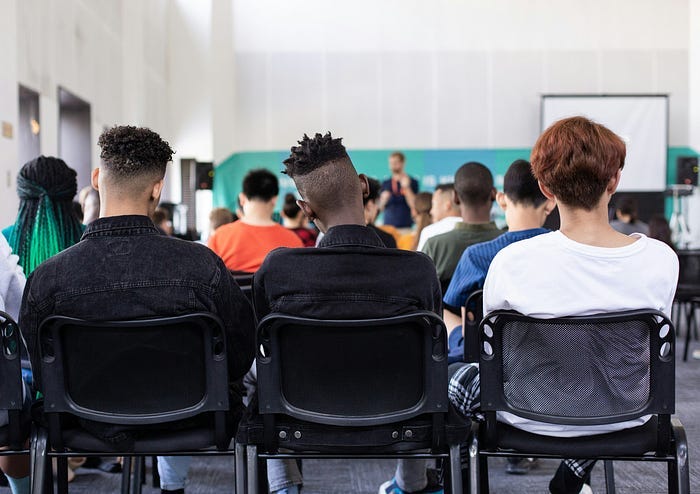New York Students and Teachers Won’t Have to Take the Heat Much Longer
New York has raised the bar again, this time protecting the health and educational well being of its students and educators, challenging other states to follow suit.
No surprise, 2024 was hot.
Also no surprise, it was the hottest year on record just like 2023 before it, and 2022 before that.
Prediction: this year is going to surpass all of them.
There is literally nothing the climate crisis does not affect, from immigration to food supplies and prices, national and international security, transportation, housing, and education.
“Education?” you ask. “What does climate change have to do with education?”
If you’ve spent any time in a school, you might be among the lucky few to have been in one that was air conditioned during the spring and late fall when kids return to classrooms.
But, despite the expectation that American classrooms should always be comfortable learning environments, the truth is too many are routinely too hot for students in the warmer months and too cold in the winter. Such conditions significantly hinder students’ learning.
Subjecting students and school staff to extreme temperatures also conveys a lack of respect. Students are required to report to a place most don’t want to be only to be forced to sit for seven hours uncomfortable. Teachers are left feeling even more underappreciated.
Not to mention, it’s unhealthy.
Plus, it’s just flat-out inhumane. Animal shelters have maximum heat regulations. Schools do not.
But New York has become the first state to pass legislation to address this.
Last month, NY Gov. Kathy Hochul signed Senate Bill 3397A, which “Establishes a maximum temperature in school buildings and indoor facilities”.
Sponsored by State Senator James Skoufis (running for Democratic National Committee Chair):
According to the New York State United Teachers (NYSUT):
This is the first law that has ever established maximum temperature regulations for schools. At 82 degrees, schools must implement measures like turning off overhead lights, using fans and closing blinds. At 88 degrees or higher, schools must have plans to relocate students and staff when practicable. This means districts must develop plans to take action during high-heat days, and must show a good-faith effort to enact these plans when needed. The law does not require school closures.
Set to take effect at the start of the 2025–26 school year, NYSUT President Melinda Person explained:
Today, we celebrate a monumental step forward for the health and safety of students and educators across New York. Governor Hochul’s decision to sign this bill into law reflects a commitment to ensuring our classrooms are conducive to learning — not sweltering saunas.
We are grateful to sponsors Sen. James Skoufis and Assemblymember Chris Eachus, who were unwavering in their advocacy for this bill. This victory — fought for by NYSUT members, parents and allies on both sides of the aisle — underscores the power of our collective voice to protect schools and prioritize our students’ well-being.
One of the bill’s co-sponsors, Chris Eachus, a retired teacher, encouraged fellow lawmakers this spring to experience NYSUT’s “hot seat,” a portable, plastic enclosure set up in the the Legislative Office Building Well, designed to simulate extreme classroom temperatures. As heat pumped into the apparatus climbed into the 90s, participating lawmakers were asked to complete a nine-question quiz.
Assembly Member Eachus explained:
What I experienced back there I experienced many times in the classroom…when it gets that hot, it’s not a learning environment anymore. Senators and Assembly people who were unsure of co-sponsoring absolutely said they’d get on it now. I don’t think there’s anybody that would vote against this bill.
(Three did, but at least it passed.)
This is not the first time New York has had the distinction of being the first state in the union to pass precedent-setting legislation.
The end of 2023, Gov. Hochul authorized a commission to explore the possibility of reparations for the state’s role in discriminating against African Americans.
In 2022, New York’s education department handed down a decision requiring all 60 school districts still using Native American mascots and iconography to cease that practice by the end of the school year.
In 2019, the state passed the Climate Leadership and Community Protection Act (CLCPA), hailed as “among the most ambitious climate laws in the nation,” requiring the Empire State “to reduce economy-wide greenhouse gas emissions 40 percent by 2030 and no less than 85 percent by 2050 from 1990 levels.”
Substantial change happens locally.
We fixate on national politics while often ignoring what’s happening in our local and state governments, which, as former U.S. Supreme Court Justice Louis Brandeis appropriately dubbed “the laboratories of democracy”.
New York has raised the bar again, this time protecting the health and educational well being of its students and educators, challenging other states to follow suit.





